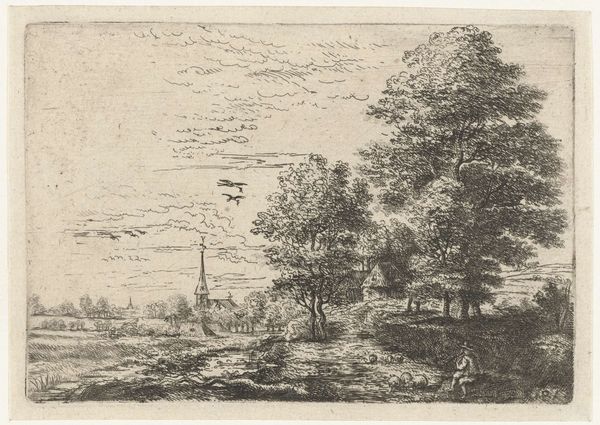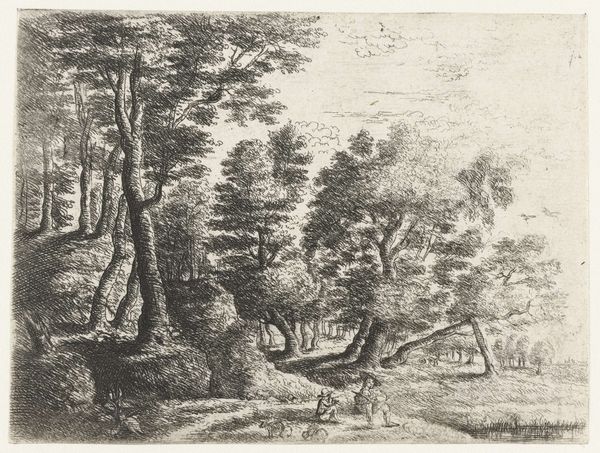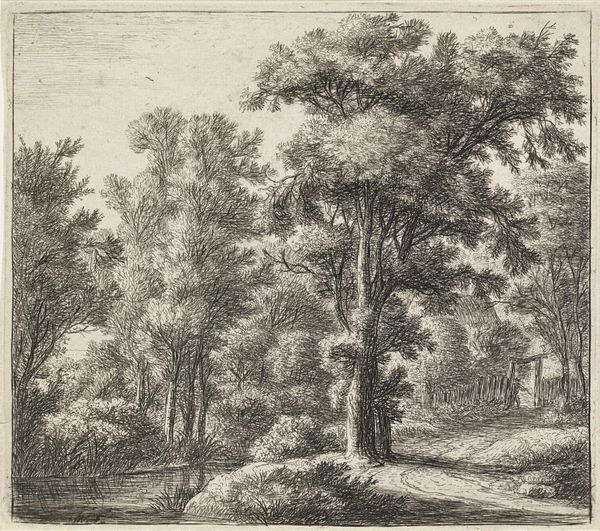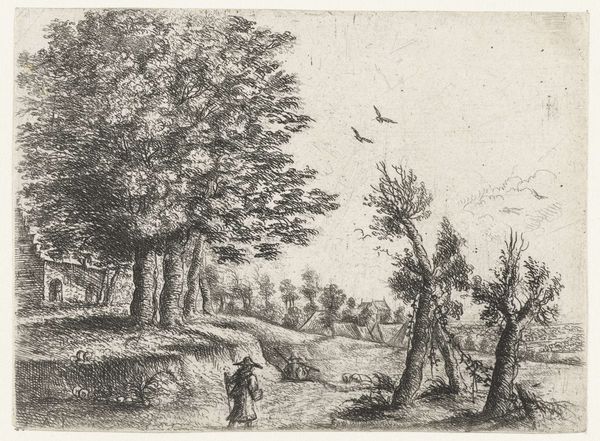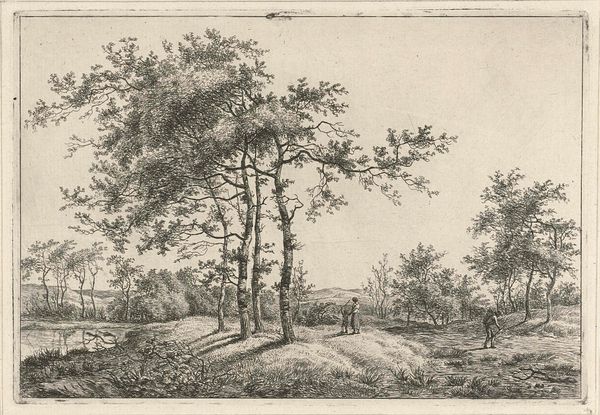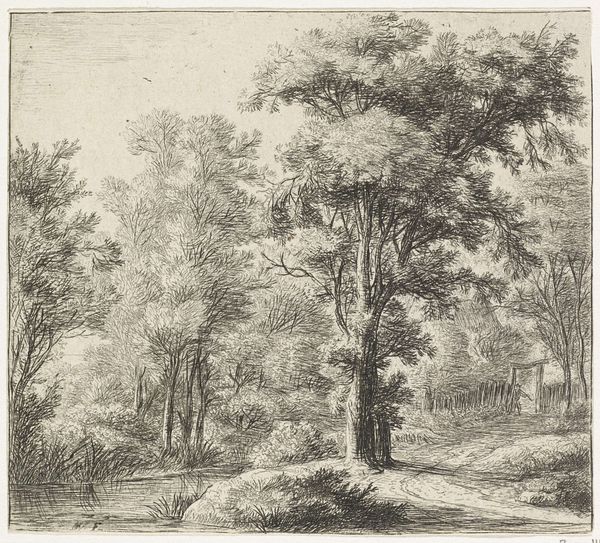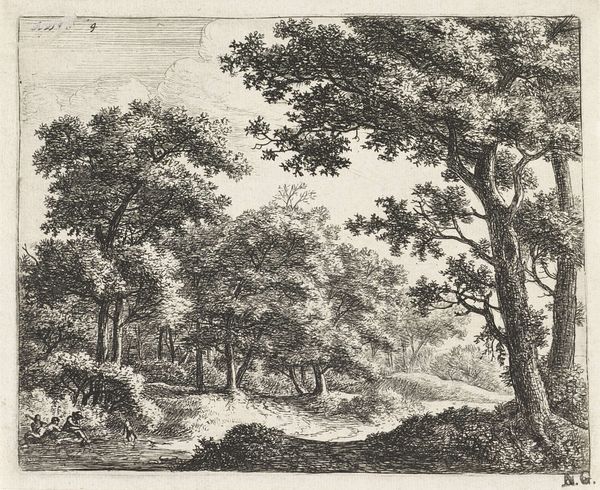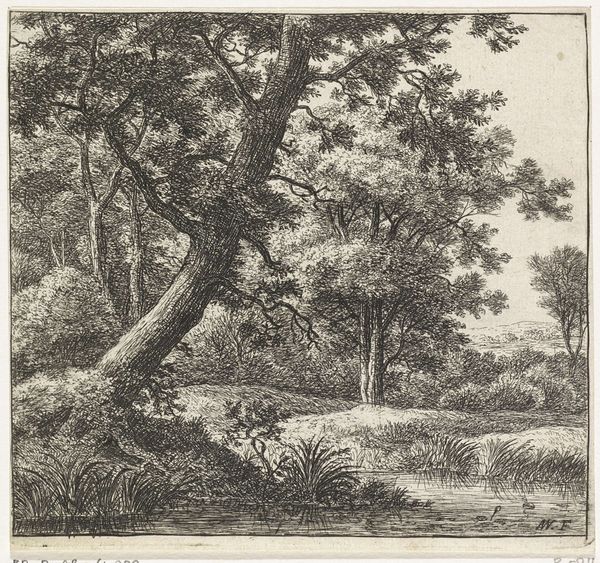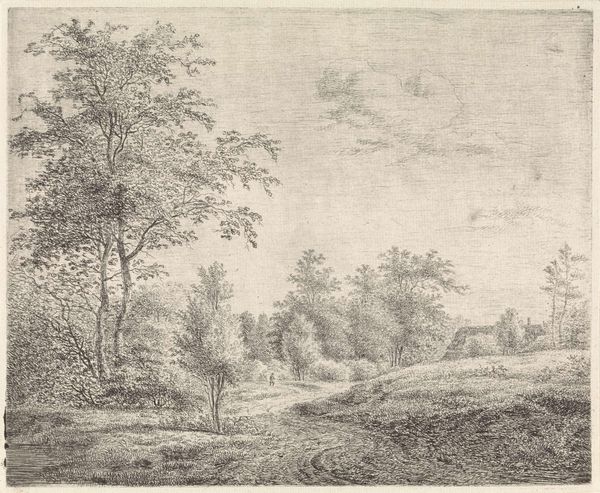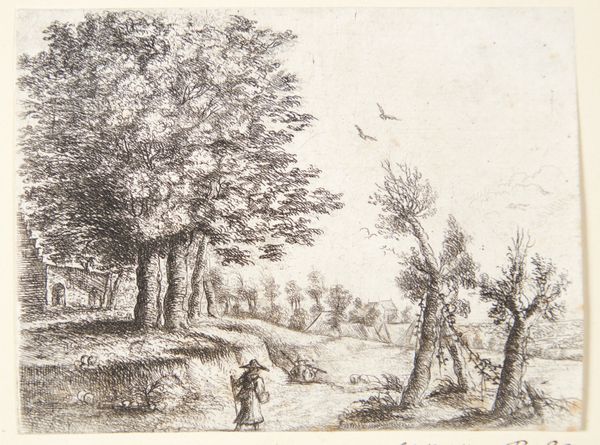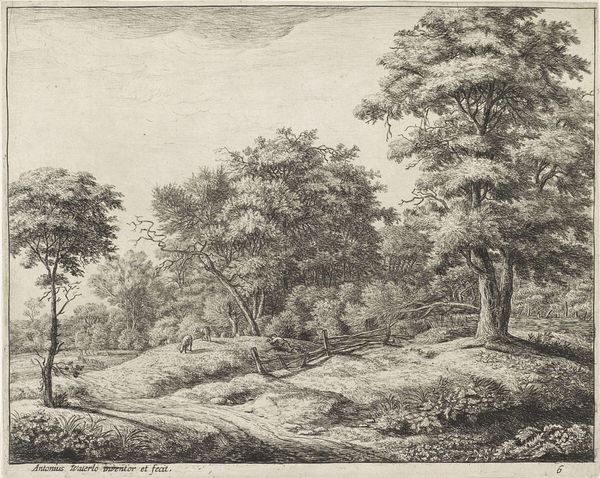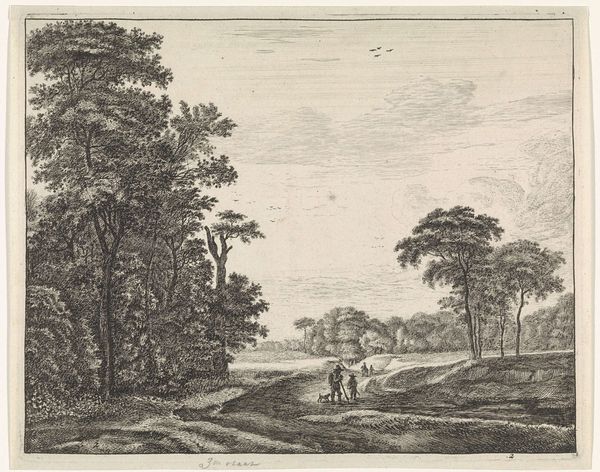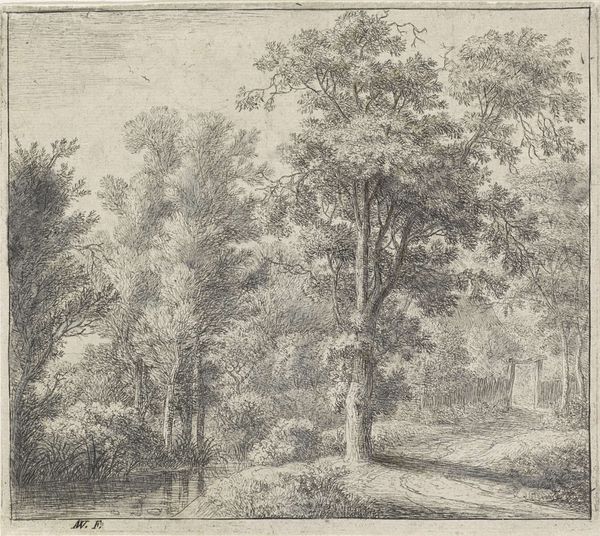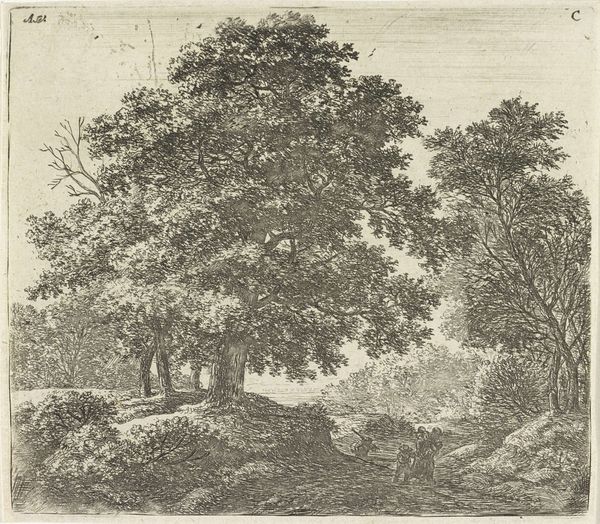
print, etching
#
baroque
# print
#
etching
#
landscape
#
figuration
#
genre-painting
Dimensions: height 82 mm, width 109 mm
Copyright: Rijks Museum: Open Domain
Philips Augustijn Immenraet made this etching of a landscape with a man and a donkey in the 17th century. Etching is an intaglio printmaking technique, meaning the image is incised into a metal plate using acid. The plate is covered with a waxy, acid-resistant ground, and the artist draws through the ground with a sharp needle. The plate is then immersed in acid, which bites into the exposed lines. This painstaking process is repeated to achieve the desired depth and darkness of line. The fine lines and delicate shading of the trees, the sky, and the figures, all speak to the skill and labor involved in the etching process, demanding time, patience, and expertise to create a highly detailed depiction of nature. The material qualities of the etching – the sharp lines, the tonal gradations – reflect not only Immenraet’s artistic vision but also the physical effort of manually creating the plate from which the image is printed. Considering the making enriches our understanding of the scene: it is not just a depiction of the countryside, but also a testament to the artist's labor, and the wider context of printmaking as a skilled craft.
Comments
No comments
Be the first to comment and join the conversation on the ultimate creative platform.
